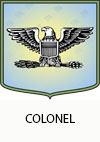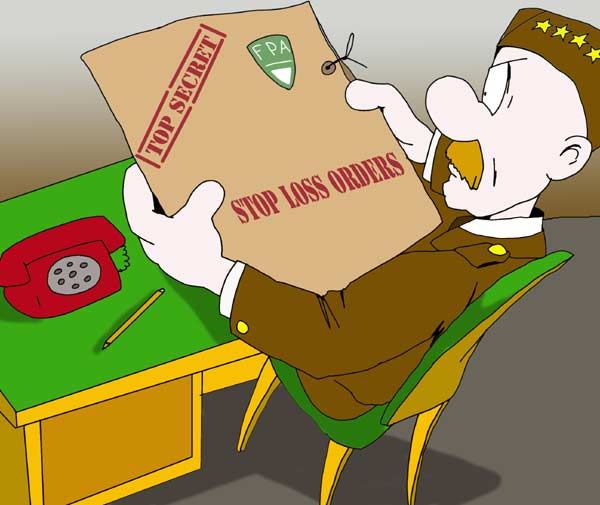Part IV. Other Thoughts on Stop-Loss Orders


Pipruit: Interesting, but a bit specific. I suppose it will not be too often when I need this option.
1. Do not place your stop-loss order too tight. Any stop-loss order should allow the market to breath. This range could be different depending on time frame. The higher the time frame – the more room is needed for that. Better to take into account market volatility, based on indicators that we’ve discussed in the previous lesson. Also thinking about stop-loss level as an invalidation point will help you much, because it’s very hard to imagine that the invalidation point of your position could be just 10 pips lower than your entry;
2. Do not place stop-loss order too far. Again, here you have to remember that this is an invalidation point. If you place stop far beyond it, then you will hold an absolutely losing position after it will pass through your crucial point, when your entry context will be absolutely broken by the market. What to do for that? Second negative moment is that you will be able to trade much smaller position size, third moment is that it’s will be very difficult to enter the trade at all, since risk/reward ratio will be either too small or the target objective will be unrealistic.
3. Do not place stop-loss based on your position size. In fact, position size depends on stop-loss level, but not vice versa. If you determine stop-loss level, based on your position size, then it does not relate with market behavior. You have to use the technical picture, volatility or any other issues that have direct link with real market movements and breathe. When you have estimated where you have to place stop-loss by one of these technical or statistical issues – then adjust your position so, that it matches to your money management limitations. Remember that – area of stop loss-order estimation and money management are first, position size is second;
4. Place stop-loss orders beyond levels but not before them. We’ve already discussed it previously. Since stop-loss order is protection of your capital, it has to be protected by some technical stuff and very often they are different types of support or resistance levels. You want that your stop-order will be safe, so placing it above resistance and below support is a good idea. These are levels the market has to struggle to move through, hence your stop-order will be as troops protected by a wall. If you will be General of the Army – would you place your troops in front of the wall during enemy attack? I guess not. So, the same is with a stop-loss order. If the market will break the level, well, then definitely it will proceed through free space in the direction of breakout. From that perspective exiting the trade by stop-loss to prevent more losses is logical.
5. Predetermine and place stop-loss orders simultaneously with entering the trade by applying limit order with your software. Some very experienced traders apply manual stop-loss orders. They do not place them initially and keep this level in mind. If the market hits this level – they analyze the way how it does it and then close their position. So, we are not them and do not have such experience and hard rock discipline. For newbie traders we highly do not recommend such approach to stop-loss orders. No manual stop-loss orders! Place stop-loss order in advance of any trade.
6. Do not ever cancel your stop-order when a trade in progress or widen it by hoping that the market is at the edge of reversal. This leads to breaking of your trading plan and should be treated as a mistake. When you are in the rush, smoke and fire of financial battle you can’t think reasonably. It is strongly forbidden to widen or to cancel your stop-loss order that you’ve placed based on your predetermined trading plan.
If your stops are not correctly matched with invalidation levels – this is a problem of your trading system and you may fix it later in a calm situation or develop a new technique of stop placement. But since you apply any technique of stop-loss placement in current trade ahead of it – follow it strictly.
7. Trail your stop as soon as possible by your trading system. Protect your profit. Your task is to make profit in every trade according to your trading plan, not to get in Guinness World Records with greatest pips ever caught in single trade. Move your stop higher as the market starts to move in your favor. When we’ve spoken about harmonic patterns – there are a lot of examples how to do it. Apply moving stop to breakeven.
Comments
D
DPham
5 years ago,
Registered user
Hello Sive,
Thank you for all the hard works you have done for newbies like us. In this section, I have heard about Mental Stoploss. Some say it just can be used by Pro traders combine with some kind of other stuffs. Could you please talk more about Mental Stoploss? When to use and how to use?
Thank you Sive.
Thank you for all the hard works you have done for newbies like us. In this section, I have heard about Mental Stoploss. Some say it just can be used by Pro traders combine with some kind of other stuffs. Could you please talk more about Mental Stoploss? When to use and how to use?
Thank you Sive.
Table of Contents
- Introduction
- FOREX - What is it ?
- Why FOREX?
- The structure of the FOREX market
- Trading sessions
- Where does the money come from in FOREX?
- Different types of market analysis
- Chart types
- Support and Resistance
-
Candlesticks – what are they?
- Part I. Candlesticks – what are they?
- Part II. How to interpret different candlesticks?
- Part III. Simple but fundamental and important patterns
- Part IV. Single Candlestick Patterns
- Part V. Double Deuce – dual candlestick patterns
- Part VI. Triple candlestick patterns
- Part VII - Summary: Japanese Candlesticks and Patterns Sheet
-
Mysterious Fibonacci
- Part I. Mysterious Fibonacci
- Part II. Fibonacci Retracement
- Part III. Advanced talks on Fibonacci Retracement
- Part IV. Sometimes Mr. Fibonacci could fail...really
- Part V. Combination of Fibonacci levels with other lines
- Part VI. Combination of Fibonacci levels with candle patterns
- Part VII. Fibonacci Extensions
- Part VIII. Advanced view on Fibonacci Extensions
- Part IX. Using Fibonacci for placing orders
- Part X. Fibonacci Summary
-
Introduction to Moving Averages
- Part I. Introduction to Moving Averages
- Part II. Simple Moving Average
- Part III. Exponential Moving Average
- Part IV. Which one is better – EMA or SMA?
- Part V. Using Moving Averages. Displaced MA
- Part VI. Trading moving averages crossover
- Part VII. Dynamic support and resistance
- Part VIII. Summary of Moving Averages
-
Bollinger Bands
- Part I. Bollinger Bands
- Part II. Moving Average Convergence Divergence - MACD
- Part III. Parabolic SAR - Stop And Reversal
- Part IV. Stochastic
- Part V. Relative Strength Index
- Part VI. Detrended Oscillator and Momentum Indicator
- Part VII. Average Directional Move Index – ADX
- Part VIII. Indicators: Tightening All Together
- Leading and Lagging Indicators
- Basic chart patterns
- Pivot points – description and calculation
- Elliot Wave Theory
- Intro to Harmonic Patterns
- Divergence Intro
- Harmonic Approach to Recognizing a Trend Day
- Intro to Breakouts and Fakeouts
- Again about Fundamental Analysis
- Cross Pair – What the Beast is That?
- Multiple Time Frame Intro
- Market Sentiment and COT report
- Dealing with the News
- Let's Start with Carry
- Let’s Meet with Dollar Index
- Intermarket Analysis - Commodities
- Trading Plan Framework – Common Thoughts
- A Bit More About Personality
- Mechanical Trading System Intro
- Tracking Your Performance
- Risk Management Framework
- A Bit More About Leverage
- Why Do We Need Stop-Loss Orders?
- Scaling of Position
- Intramarket Correlations
- Some Talk About Brokers
- Forex Scam - Money Managers
- Graduation!